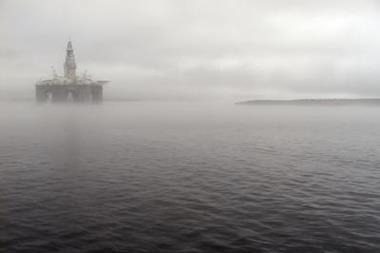This profiled the respondents
What is your company's main industry sector?
Our 40 interviewees worked overwhelmingly in industrial or quasiindustrial companies of one sort or another. The chart above divides the respondent companies into eight groups: manufacturing and engineering; energy and utilities, including oil and gas; food and drink production; transport, infrastructure and construction; chemicals; pharmaceuticals; telecommunications; and finance, media, retailing and business services. The greatest number of respondents – 25 percent – fell into the manufacturing and engineering category, with energy and utilities the next largest group. Even among the four respondent companies
mainly involved in finance, media, retailing or business services, three had direct practical exposure to environmental risk through their business operations.
How many employees does your company have?
Our interviewees came from medium-sized and large companies. Sixty per cent practised their risk management skills within organisations employing more than 10,000 people.
What is your company’s annual turnover?
Corporate turnover figures reflected a similar picture. Only six of our 40 interviewees worked in companies with turnover of less than 1 billion. Of these six companies, one turned over about 300 million, while the remaining five all turned over at least 500 million.
The remaining 34 interviewees worked in companies with over 1 billion in annual turnover. Of these, 22 came from companies turning over more than 5 billion a year. Our interview sample therefore included many of Europe’s biggest industrial groups.
Would you describe your company’s potential exposure to environmental liability risks as: very high/ high/ average/ low/ very low?
To establish a baseline, we asked interviewees how they rated their companies’ potential exposure to environmental liability risks. Thirty-five percent rated their potential exposure ‘high’ or ‘very high’, 35 per cent ‘average’ and 30 per cent ‘low’ or ‘very low’.
Of the 14 respondents who rated their company’s potential exposure to environmental liability risk as high or very high, five were in manufacturing or engineering, two in food or drink production, two in pharmaceuticals, two in transport or infrastructure, two in energy or utilities and one in chemicals.
Of the 12 respondents who rated their company’s potential exposure to environmental liability risk as low or very low, two were in telecommunications and three were in finance, business services or media. It seems obvious that a banking office should have less potential exposure to environmental liability risk than an oil refinery. But of the remaining seven ‘low’ or ‘very low’ risk companies, two were in energy or utilities, two were in food or drink production and one each were in pharmaceuticals, transport or infrastructure and manufacturing or engineering. Some companies may well have managed to reduce their potential exposures to a much lower level than others in the same industries, but interviewees also seem to have varied in their interpretation of the meaning of subjective terms such as ‘low’ and ‘high’.
The responses here might understate the extent of potential environmental liability risk among these companies. Many interviewees seem to have reasoned that while the underlying environmental risk from their operations was theoretically high, tight risk management processes drove the actual, residual risk down to a lower level.

















